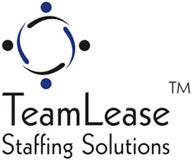In 2002, Bangalore-based TeamLease Services pioneered the concept of temporary staffing in India. Over the years, the staffing services company — founded by Manish Sabharwal, Ashok Reddy and Mohit Gupta — has placed more than half a million people in both temporary and permanent jobs. Currently, it has over 60,000 employees on its books, working for around 1,400 clients in 700 locations.
TeamLease’s biggest constraint has been the skills deficiencies of its candidates. To address that, the company is now adding vocational training to its services, recently acquiring a majority stake in Indian Institute of Job Training (IIJT), one of the largest training companies in the country. Over the next two years, TeamLease plans to invest around US$16.5 million in the business. In an interview with India Knowledge at Wharton, Sabharwal, chairman of TeamLease, discusses India’s job environment, the problem of “unemployability” and the company’s strategy to prepare people for work.
An edited transcript of the conversation follows.
India Knowledge at Wharton: What is your assessment of India’s job market at present, and how do you see it changing in the coming months?
Manish Sabharwal: The global economic downturn has created a clear divergence in India’s labor market between India as a [consumer] market and India as a production base. The production-base story is still linked to the global recovery and the clearing of [economic] uncertainty. However, the downturn reinforced our consumption and investment story, and that is where most of the job creation is going to happen…. Most of the labor force will be absorbed into the domestic market over the next few decades. I must caution that the market is hardly back to the peak of high tide. I hope the stock market knows something my clients don’t, but the worst is clearly behind us.
India Knowledge at Wharton: What is a bigger problem in India — unemployment or unemployability?
Sabharwal: There is no question that the bigger problem is unemployability. The biggest lesson of the past 20 years of economic reform [in India] is that growth is a necessary, but not sufficient, condition for poverty reduction. Poverty reduction needs [to give people] access [to opportunities], and access comes from three E’s — education, employability and employment. Policy makers after Independence [from British rule] got many things right about human capital, particularly higher education. But our schools and vocational training system not only do not have the capacity to handle the demographic bulge, they also do not prepare our youth to hit the ground running in modern workplaces. The “Ayatollahs” of education have tried to control quality by controlling quantity, and consequently we have ended up with neither.
India Knowledge at Wharton: What policy changes do we need in the country to improve skills development and employment?
Sabharwal: So far, India’s growth has allowed us to throw money at the problem. We have increased our spending on education and skills more than six fold over the past 10 years. But you don’t repair leaky pipes by turning up the water pressure. First, we need a massive dose of deregulation, which will end the suffocating controls that hinder the creation of private capacity and sabotage competition. Second, we need to separate financing from delivery and make government money available for private delivery. Third, we need to link our financing to outcomes [such as] learning and jobs, because spending money is not the same as investing it. Finally, we need to decentralize the delivery systems [such as] employment exchanges, schools and industrial training institutes, which are all currently in the hands of state governments.
India Knowledge at Wharton: India has a host of training institutes, but employability is still a grave issue. Why is this? What do you see as the biggest challenge in creating employability?
Sabharwal: The two biggest challenges are linking the supply side — the training institutes — to the demand side — the employers. Currently, supply and demand are in parallel universes, so most kids are not “job ready.” On the government side, we do not link financing to outcomes and have not made government money available for private delivery. We also need to simultaneously tackle our school system because we cannot teach someone in six months what they should have learned [over] 15 years.
India Knowledge at Wharton: What is at stake for the country if proper job training is not provided? Will India’s “demographic dividend” go to waste?
Sabharwal: A demographic dividend does not mean people; it means productive people. India’s labor market is going through five transitions that essentially represent journeys to a better life and higher productivity: Farm to non-farm, rural to urban, unorganized to organized, subsistence self-employment to decent wage employment, and school to work. Unfortunately, the journeys are not happening on the scale and frequency that India needs because of problems connecting labor supply to demand, repairing the mismatch of supply for demand and preparing the supply pipeline for demand. If we don’t fix our labor laws, vocational training regime and education system, the repackaging of our population from a curse to a dividend will only be marketing spin and have substantial and deeply unhealthy consequences.
India Knowledge at Wharton: Why has TeamLease decided to get into training? How does this fit in with your overall growth strategy?
Sabharwal: TeamLease’s binding constraints — the only things that stand between us and a million employees — are labor laws and the skills deficit. Labor laws written many decades ago have become a weapon in the hands of trade unions, which position job preservation as a form of job creation. The skills deficit means that unemployability is a bigger problem than unemployment and we are a people supply-chain company that is running out of inventory.
The key challenges for us are to figure out how to “manufacture” our own employees and convince policy makers that the current labor regime is the ultimate minority rule perpetuated by labor market insiders — [comprising] 7% of the workforce — [trying] to lock out labor market outsiders — that is, the 93% of the workforce, who are less skilled and educated, from small towns, women coming back from a maternity leave and so on. This kind of vertical integration [that Teamlease is pursuing] is probably against most of what I learned studying at Wharton but sometimes in emerging markets, you have to create the ecosystem.
Every time we go for an offsite strategy meeting, we realize that the binding constraints to our growth are exogenous not endogenous. Doubling my sales force, investing more in technology or improving my operations will double or triple my size. Figuring out how to offer my 1,400 corporate clients trained employees could increase my employee base by a factor of 10 to 15. We started out [wanting] to fix India’s people supply chain and the past six years have taught us that we will have to move beyond fixing the matching problem — connecting labor supply to demand — to fixing the mismatch problem — repairing supply for demand.
India Knowledge at Wharton: Can you share the details of the IIJT acquisition? What did you see as its strengths, and what will be your key post-acquisition focus areas?
Sabharwal: We acquired a 70% stake in IIJT and have an option to acquire the whole company in 24 months. IIJT has 250 training centers across the country with a capacity of over 100,000 students and offers courses in sales, customer service, accounting, finance and information technology. We will use IIJT’s network to train people for our clients. Our vision is to convert the 250 centers into private employment exchanges offering counseling, assessments, training and jobs. The biggest attraction of IIJT was its national footprint. We made a clinical buy-versus-build calculation.
The time and cost it would have taken us to duplicate [IIJT’s] network would have been valuable time lost in a race that has already taken too long to start. Over the next six months, we will [turn] its operations, technology, academics and overall offerings into something that will be very compelling for our corporate client base and candidates.
The fastest-growing job areas over the next 10 years will be sales and customer service. Most of the non-farm job creation in rural areas is in these two areas and this will accelerate as domestic consumption explodes. We are also launching an employability offering that will focus on English, “soft” skills and computers. The employment outcomes for people who speak English are 300% higher than those who don’t. English is like Windows; it is an operating system.
India Knowledge at Wharton: How will you differentiate yourself from other training institutes?
Sabharwal: The primary difference will be in our superior operations and people, which will be complemented by our 1,400 corporate clients, who will offer students jobs and apprenticeships. Unlike education, where you can argue about outcomes for years, the outcomes of vocational training are binary; it either leads to a job or not. We believe that over time, our differentiation will be our outcomes. These outcomes will be built on an ecosystem that prays to one God: Jobs.
India Knowledge at Wharton: In the supply chain for trained, employable manpower, there must be tremendous complexities at every stage. Does each stage not require specialization and will it not be very challenging for one player to do everything? What are the key complexities and how do you plan to handle them?
Sabharwal: Most people believe the key to success in vocational training requires cracking the seemingly impossible trinity of cost, quality and scale. We agree that the solution does not lie in more cooks in the kitchen, but a different recipe. The innovation lies at the intersection of employment and employability.
The courses have to have a [path to a] job that is dependent upon student effort. A candidate can receive a conditional job offer that converts into [a permanent] job if the student reaches a particular threshold of exams or certification. This has not been done before and is not going to be easy. Our entry-gate assessments, curriculum, exit-gate assessments, teacher training and apprenticeships will all be aligned to our proprietary TNEF [TeamLease National Employment Framework], which has 63 industries, 1,500 profiles and 15,400 jobs. The only person who can handle the challenges in our business is somebody like us. We will either succeed or die trying.
India Knowledge at Wharton: What are your other key initiatives?
Sabharwal: We were the first to start formal public-private partnerships with state governments for employment exchanges. This gives us access to infrastructure and candidates, while it gives the government our matching ecosystem. We acquired an assessment company a few months ago, which we are now overlaying onto IIJT’s network. We are investing heavily in our payroll-processing offering. We are also ramping up our regulatory operation, which gives companies a monthly “wall-to-wall” service for all employee benefits and labor law compliance.
India Knowledge at Wharton: What have been the key factors for TeamLease’s growth up to now?
Sabharwal: The most important has been being in the right place at the right time. We are a child of low hiring standards, which arose from an explosion in domestic consumption of services and products. The second factor has been that TeamLease was our second venture in the HR space, so we had not only customer access, but also a team that understood the market and its variables. [In 1998, TeamLease’s three founders set up India Life, an HR outsourcing company, which they sold to Hewitt Associates in 2002.]
A key part of entrepreneurship is putting together a team and that means kissing many frogs to find your princess. We had done our frog kissing in India Life and the day our non-poach agreement with Hewitt ended, we had 27 people come over, and institutional memory and ability was created overnight. Finally, we made some interesting investments in CRM, technology and products tailored to companies that had a distributed employee base across the country.



